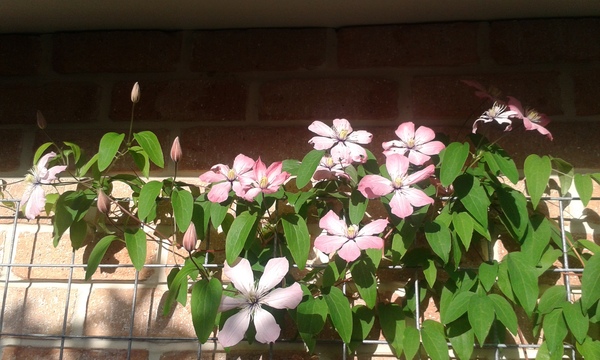With spring soon to head into summer, Free Times gardening columnist BEATRICE HAWKINS shares her tips and musings for this week…
THIS month the birth flower is the chrysanthemum symbolising compassion, friendship and joy.
Obviously these birth flowers are decided in the northern hemisphere as this is not the time to naturally have chrysanthemums flowering here.
They are an autumn bloom and a very appropriate favourite flower for Mother’s Day in May.
At this time of the year they should be well advanced in the garden and maybe have had the first of three trims before Christmas to force them to produce more flowers and to prevent them from becoming too tall and ungainly.
With full sun, free draining and fertile soil, they should produce well.
In times past, I have been able to buy seedlings but am finding this impossible. Seems I’ll have to wait until late summer/autumn and buy advanced plants already flowering in pots – spoils the fun and limits the number I can afford to buy.
They are a good, long lasting cut flower and come in an amazing array of colours and forms from pompom to spider to huge mop tops and the simple daisy style.
The colours range from white through all shades of pink and mauve, to red and purple, bronze, yellow and orange and even lime green.
One of my favourite climbers is the clematis in all its forms from the delicate Australian natives to the beautiful hybrids in all colours and types.
They are a very easy climber to grow provided you can keep their roots cool and let them go up towards the sun. They climb easily up a tree or on a light frame.
Where I had them growing in another garden, I put a good layer of lucerne over the roots with some large rocks on top and let them climb up some ordinary wire netting on a fence – this worked a treat. They are not a heavy plant so don’t damage what they climb over.
They flower freely at this time and if pruned back when they have finished the current flowering can be encouraged to produce again in autumn. Being such a light climber they do not like wind, so some protection from this is needed.
They will die back in winter and should be pruned back in late winter and tidied up ready for the spring growth. I have two doing very well in large pots in a sheltered area at the side of my house. At present there is a great variety of forms available in nurseries so why not find a space for one.
I have yellow and orange Asiatic lilies blooming in my garden and have recently purchased and planted in pots a lot of others. It is very easy to get carried away. I am looking forward to the new ones flowering later in summer.
Next year I am aiming to get some of the old fashioned orange and black spotted tiger lilies that I remember from my childhood. I was too late this year and the supplier was sold out.
Put lilies in the garden and they continue to multiply and improve each year. Some I have purchased are called “Sumo” bulbs as they are very large and no longer suitable for cut flower production as they produce too many flower heads per stem, perfect for the home garden. I think this is very clever naming and marketing.
Another hardy bulb is the Jacobean lily. A common name for these gorgeous red flowers is the Aztec lily as they originate in South America. I have grown these successfully from hot (40+ degrees) dry western NSW to the frosty New England tablelands (-6 to -12 degrees) and they are doing extremely well here. They have been successful in pots and in the ground and actually seem to thrive on neglect. They look more like a beautiful red orchid than a lily (another name is poor man’s orchid). I am a real fan and have several clumps in my new garden. They look nice this year but next year should be a real treat as they multiply and naturalise and settle in amongst the Shasta daisies. As you will have realised I like easy care plants that recur each year.
The Horticultural society’s bus trip to Stanthorpe last Friday was, as usual, most enjoyable. Homemade morning tea at Dalveen and a look in the Old Wares shop, apple pie at Suttons then to Mick’s Four Season nursery with plants to tempt us. Lunch was at the RSL, on to Fay Helwig’s spectacular poppy field, a short stop at Jester Hill Winery, wonderful jams and pickles at the Jam Works, scented soy candles at Anna’s and finally fresh local produce at Sam’s fruit and vegetables before making it back to Warwick about 4.30pm.
It was a really great, fun day out and if you missed it, you should plan to come on the next one the committee organises in 2017.
Watch this space for further details.







